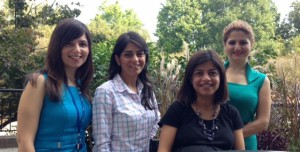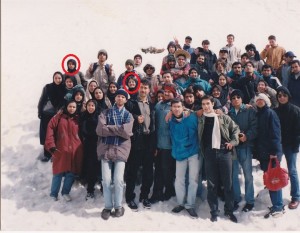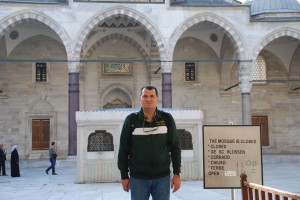Because finding analytical talent continues to be a challenge for most, here I offer tips 5, 6, and 7 of my ten tips for finding data scientists, based on best practices at SAS and illustrated with some of our own “unicorns.” You can read my first blog post for why they are called unicorns and for tips 1 and 2 on finding them in an MS in Analytics Program or from a great program you’ve never heard of. You can read tips 3 and 4 on how to find this kind of talent outside the traditional academic disciplines. Today’s post focuses on interns, social networks, and sponsorship for permanent residency.
5. Try before you buy – create an intern program

Intern programs are a great way for both the employer and the student to find out if the candidate is a good fit at the organization, so SAS hires close to 200 students each year. In addition to the standard internship programs that we run, we have two special programs that are particularly useful in our quest to find analytical talent. The Graduate Research Assistant (GRA) program places PhD students from local universities into Advanced Analytics R&D for up to 20 hours/week during the year and full-time during the summer (we had 14 in 2014). These students work on research in SAS related to their graduate training, and we maintain a partnership with their academic advisor. SAS provides funding to the academic departments, who in turn provide a stipend, tuition, and benefits for the students. Academics benefit from exposure to problems in practice, SAS benefits from academic insight into our research areas, and the students receive funding but also exposure to practice. R&D also has technical student positions that function like regular internships. R&D hires most of these students when they finish, including the women above who are part of the growing Iranian diaspora at SAS—Fatemeh (who works on SAS® Marketing Optimization), Zohreh (who leads a team of operations research specialists who develop solutions for retail and manufacturing), Shahrzad (who tests our mixed integer programming solver and decomposition algorithm in SAS/OR®), and Golbarg (a current GRA student who works on our Advanced Analytics and Optimization Services team, which provides specialized consulting on optimization and simulation problems).
Advanced Analytics R&D also has an Analytical Summer Fellows program, which hires PhD students for a special summer internship to expose them to the world of commercial statistical software research and development and provide an opportunity to explore software development as a career choice. In addition to a standard summer internship salary, the students receive a stipend, which allows us to recruit students from around the US. The program began with one student in statistics in 2006, and thanks to our CEO Jim Goodnight’s support and enthusiasm for programs of this kind, we have now expanded it to include positions for students in statistics, data mining, econometrics, operations research, and text analytics.
6. Use social networks to hire the friends of your unicorns

We know the power of social networks from an analytical perspective, but have you thought about using them in your recruiting? At SAS, 55% of our hires come from an employee referral. After all, while merit is critical choosing the best candidate to hire for a given role, having a “spotter” help you fill the pipeline can help immensely, since the pool of unicorns is small in the first place. And who better to know where to hunt for unicorns than a member of their own species? Our employees are eager to recruit people they know, because they consistently tell us they want to work with smart people.
Remember Zohreh and Shahrzad, two of our former GRA students? They have been close friends since high school in Iran. Zohreh first came to the US to graduate school at NC State University, to pursue her PhD in Operations Research. Shahrzad was still in Iran, first pursuing a MS in Industrial Engineering and then working in industry. Hearing about her friend’s positive experiences in graduate school in the US, Shahrzad decided to apply to a US graduate school herself. Zohreh worked as a GRA student at SAS on retail optimization solutions, and because she enjoyed her work opted to work at SAS full-time upon graduation. Later, when Shahrzad saw an advertisement for a GRA placement at SAS, she asked her friend Zohreh about it. Zohreh encouraged her to apply, and the rest is history. And Fatemeh (from the photo above) applied for a position in part because she had a positive impression of SAS conveyed by her friends Shahrzad and Zohreh.
These two long-time friends have quite the academic pedigree, since their math tutor in high school was Maryam Mirzakhani, who last year won the Fields Medal, widely considered the Nobel Prize of math. As the first woman in its 78- year history to have won she is a trail blazer. These women challenge the tradition of Western world, where far fewer women choose the STEM disciplines, because they were encouraged to pursue their interest in math. Curious about that difference, I found an interesting article that provides a cross-cultural analysis of students with exceptional math talent and provides some recommendations. Its conclusion is sobering: "In summary, some Eastern European and Asian countries frequently produce girls with profound ability in mathematical problem solving; most other countries, including the USA, do not." So while efforts are being made to close that gap, perhaps an additional tip should be that if you want to hire more female unicorns, seek out the Iranians!
7. Be willing to invest in sponsorship for foreign nationals

"In today's global economy, innovation is the key to sustained growth and success. At SAS, we have long recognized this fact; it is why we are so committed to attracting and retaining the best and brightest minds from across the globe," wrote Jim Goodnight in this opinion piece on immigration reform. Part of his interest in immigration derives from the fact that economic forecasts project that American universities will produce 1 million fewer graduates from the science, technology, engineering and math disciplines (STEM) than the US workforce needs. And he points out that American universities are not currently able to meet that need with US-born students. In the US we are fortunate that top students from around the world are drawn to our excellent higher education system, so American companies can recruit top global talent domestically. An obvious repercussion is that some of these graduates will need legal sponsorship for the papers to stay in your country. As our CEO wrote, at SAS we feel this can be an investment with high return - the fees are not significant and the talent available is high.
For example, Bahadir is a pricing expert and consultant in our Advanced Analytics and Optimization Services group in R&D. Even though he came to SAS with almost five years of professional experience, he still needed to complete paperwork for a green card to be able to work in the United States. When his work visa ran out he had to return to his native Turkey and work from our Istanbul office for 6.5 months while the next step in his immigration application was being processed. Bahadir is so dedicated that he maintained his customer meetings in spite of the seven hour time zone difference, which meant he was sometimes scheduled for telephone calls that approached the midnight hour in Turkey! Another pricing expert on his team, Natalia, is Russian by birth but as a child moved to Mexico, where she obtained her first PhD in industrial engineering at Tecnológico de Monterrey. She then moved to the US to pursue a second PhD, this time in Operations Research, from North Carolina State University. She arrived at SAS with dual Russian and Mexican citizenship but didn’t yet have permanent residency, so SAS is also sponsoring her application.

Last three tips next time:





